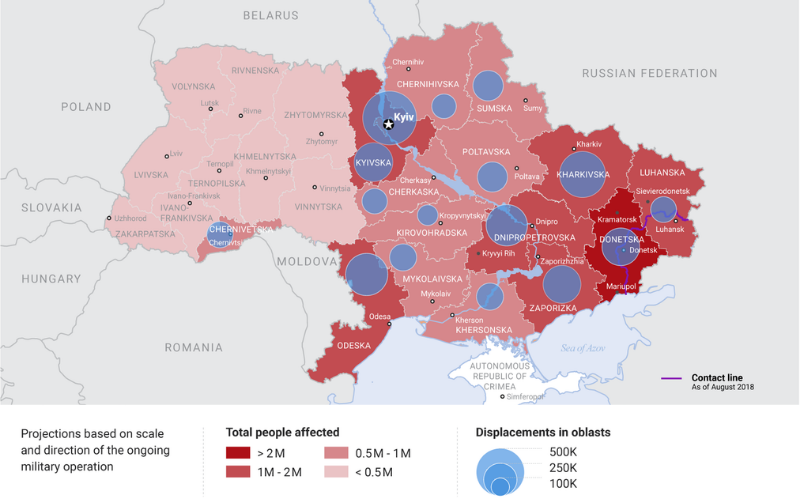Millions of Canadians have been following the crisis in Ukraine in real time. The situation is intensifying by the hour, with women, men and children dying. The situation is intensifying by the hour. Women, men and children are suffering, dying or being forced from their homes and communities.
As of April 4, more than 4 million people had fled the country, making this the fastest-growing refugee crisis since World War II.
Our staff in Romania are working around the clock, welcoming people arriving from Ukraine with food, shelter support, warm blankets, heaters, hygiene kits and cash assistance. Our teams are ready with essential items for babies, toys for children, as well as child-friendly spaces where children can rest, play and talk to counsellors if needed.
World Vision Canada President, Michael Messenger, was recently in Romania along the Ukrainian border. There, he saw the immense need of the new arrivals. He also witnessed how World Vision Romania staff are extending help and hope to the refugees. Watch his first-hand account:
Our staff in Romania are working around the clock, welcoming people arriving from Ukraine with food, shelter support, warm blankets and heaters. They’re ready with essential items for babies, toys for children, and Child Friendly Spaces.
Here’s the broader context of what’s happening:
The following map was included in the UN refugee agency’s Flash Appeal for global assistance for Ukraine, published in March. For the latest, interactive map with evolving figures, please visit this page.

This map shows the scope of the conflict's impact on people in Ukraine. Map courtesy of OHCA
Dangerous fallout from crisis in Ukraine
Not only is the crisis devastating the lives of Ukrainian children and families. Around the globe, gas, oil, and food security could be impacted. Tragically, it’s the most vulnerable people who will likely suffer most.
- Turbulence in Ukraine could further exacerbate shortages, price increases, inflation and diminished purchasing power.
- This could lead to cost-of-living increases for people everywhere, from Canada to the Central African Republic.
- Ukraine, known as the “breadbasket of Europe”, sends more than 40 per cent of its wheat and corn exports to the Middle East or Africa.
- Many regions already struggling with food shortages could be even worse off. The price increases threaten to stoke social unrest.
Threats of a hunger catastrophe
Nearly a quarter of the world’s wheat comes from Ukraine and Russia. As a result of recent event, wheat prices are at their highest since 2008. Global grain prices are at a ten-year high.
Depending on future developments with Ukraine, grain prices could shoot even higher, harming countries in Africa and the Middle East that receive most of their wheat from this region.
The World Food Programme says half of its wheat comes from Ukraine and Russia, with current events threatening their grain supplies for refugees everywhere. And the world is already experiencing COVID-19 related price spikes.
Fuel shortages threaten the poor
Russia is also a major supplier of gas and oil while supply pipelines run through Ukraine. Price spikes or supply shortages arising from the crisis will have far-reaching global impact. People in the world’s poorest regions – already struggling with rising prices – will suffer the most.
When countries and companies experience fuel price increases, they pass on the costs to their consumers. Essentials like clean water, basic food supplies, seeds for the next crop or bus transport to work could cost significantly more than they did.
Your help is urgently needed
This comes at a time when over 41 million people in 43 countries across the globe are at risk of falling into famine or famine-like conditions, unless they receive immediate life and livelihoods-saving assistance.